Warsaw, Krakow, Wroclaw, Gdansk – these cities are known to everyone who knows even a little about Poland. But what about the city of Zamość – Poland has a lot more to offer. Not only does Zamość offer beautiful surroundings, but it also has an old town that is a UNESCO World Heritage Site. Movie directors could easily recreate life in the Renaissance here – the city is so well preserved. Let’s go for a walk through Zamość in Poland!
History of Zamość
While many cities in Poland can boast a thousand-year history, Zamość is a relatively young city. It was founded only in the 16th century by the Polish nobleman and magnate Jan Zamoyski. Zamość is a so-called ideal city. It was planned just like socialist planned cities.
Jan Zamoyski – Founder of the city
Jan Zamoyski was an interesting person in his time. Born in a Calvinist environment in the then Kingdom of Poland-Lithuania, he was advisor and chancellor to the Kings Zygmunt II. August and Stephan Báthory. However, he also spent several years in Padua in Italy and was even head of the university there. At the time of the Renaissance, the concept of an ideal city was also increasingly discussed. And so Zamoyski was able to persuade the Italian Renaissance architect Bernardo Morando to come with him to the region in Eastern Poland not far from the city of Lublin and build a new city here.
Zamość – A unique renaissance town
Then, in 1580, the city was finally founded and built on the model of the Renaissance cities of the then Italy. Zamość is therefore often called “Padua of the North” or “Pearl of the Renaissance”. The market is rectangular to this day. The most important streets of the old town of Zamość still lead to it. The most important buildings of the town, such as the Renaissance Town Hall are located in central places. The city was surrounded with a massive fortress to protect the inhabitants from the attacks, which were still numerous at that time. To this day, the flair of the Renaissance has been preserved in this beautiful city.
The most beautiful sights in Zamość old town
The whole city of Zamość is a single piece of art. By obtaining the UNESCO World Heritage title, the city has changed for the better. The most important sights are shining in new splendor. But you should definitely see these Zamość Poland sights.
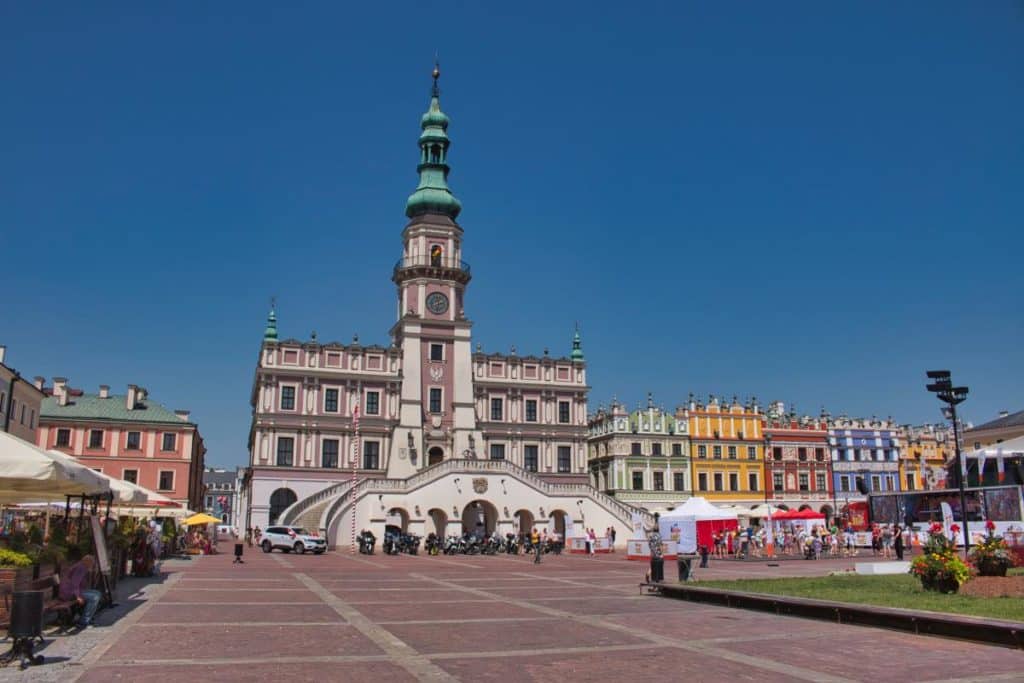
Market Square
The town’s marketplace is undoubtedly one of the most beautiful in Poland, if not in Europe. To this day you can see that the market was planned as part of the ideal city. That’s why the square of Zamość measures exactly 100 x 100 meters. Just try to walk along one of its sides. The market is intersected by a longitudinal axis 600 meters long and a transverse axis 400 meters long. The longitudinal axis runs from the bastion to the Zamoyski Palace. The transverse axis connects Plac Solny and Plac Wodny.
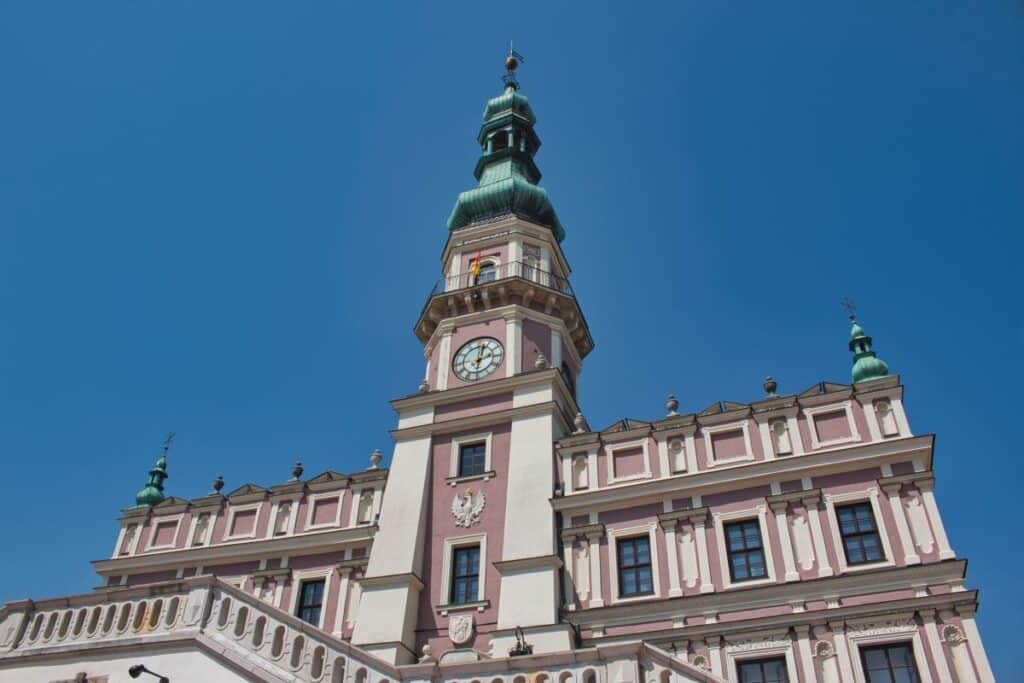
Town hall
The town hall is the most outstanding building in the square. It was built under Bernardo Morando, who was also mayor here at the beginning of the city’s history. Then in the 17th century the building was extended by a third floor and redesigned in the Mannerist style. The staircase, popular today as a photo motif, was added only in the 18th century.
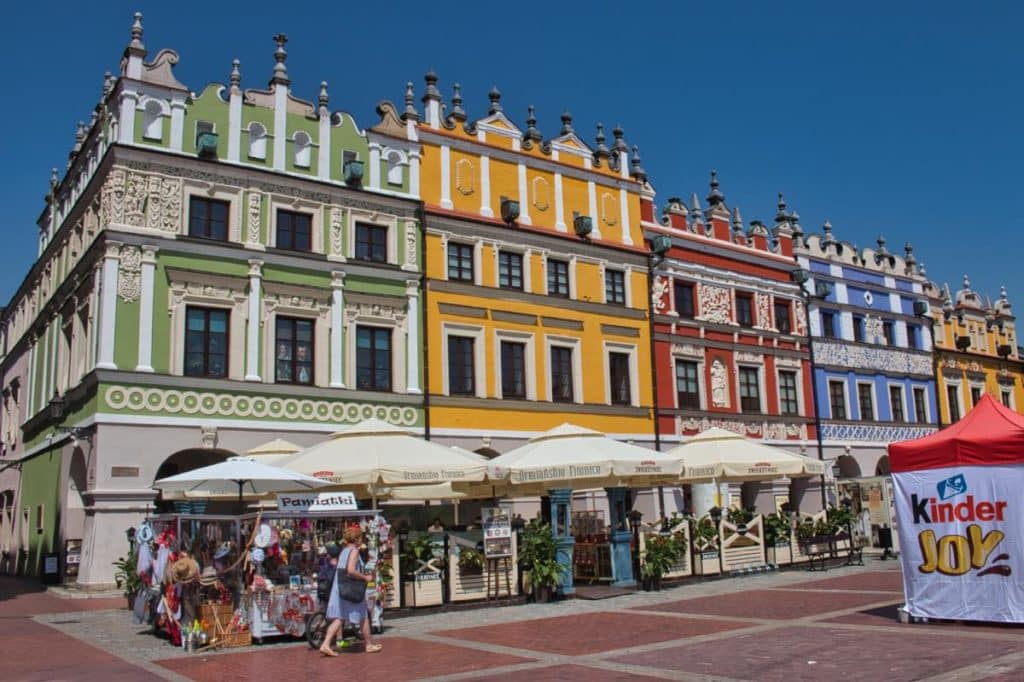
Armenian Houses
Particularly striking on the market square are the Armenian houses. They were built by Armenian merchants, who lived in many towns of the region at that time. The most famous house is Ormiańska 26, called the House Under the Angel. Today, the Zamość City Museum resides here.
Zamość Cathedral
The Cathedral of the Resurrection and St. Thomas the Apostle also called Zamość Cathedral was also built between 1587 and 1630 according to the designs of the city architect Bernardo Mornado. It is a church in the style of Mannerism and is closely based on models from Italy. Since 1992, the church has been the cathedral of the Zamość-Lubaczów diocese. The founder of the town, Jan Zamoyski, is also buried here, depicted in a painting.
Zamość Fortress
Along with the ideally planned city, of course, defensive fortifications were built to protect the city’s inhabitants in this war-torn region. And indeed, the fortress withstood attacks from Swedes and during the Kossack uprisings in the 17th century. Then, in the middle of the 19th century, it was mostly demolished. Only a few fragments remain today.
Zamość Rotunda
One of these fragments, unfortunately, has a very sad history. The Rotunda of Zamość belonged to the defensive facilities of the city, even though it was built only in the 19th century. During the German occupation of eastern Poland, the Rotunda was used as a concentration camp. Several thousand Poles were interned and 8,000 of them were murdered here. They belonged primarily to the Polish elite – among them were doctors, scientists, priests and military officers. Soviet prisoners of war were also killed here en masse. Around 45,000 people are said to have been buried in the mass graves around the rotunda.
Arsenal
Fortresses, of course, usually have an armory. Therefore, in the Zamość fortress an arsenal was also built. Even today, weapons from different centuries and the history of the fortress are displayed here in the Fortress and Weapons Museum.
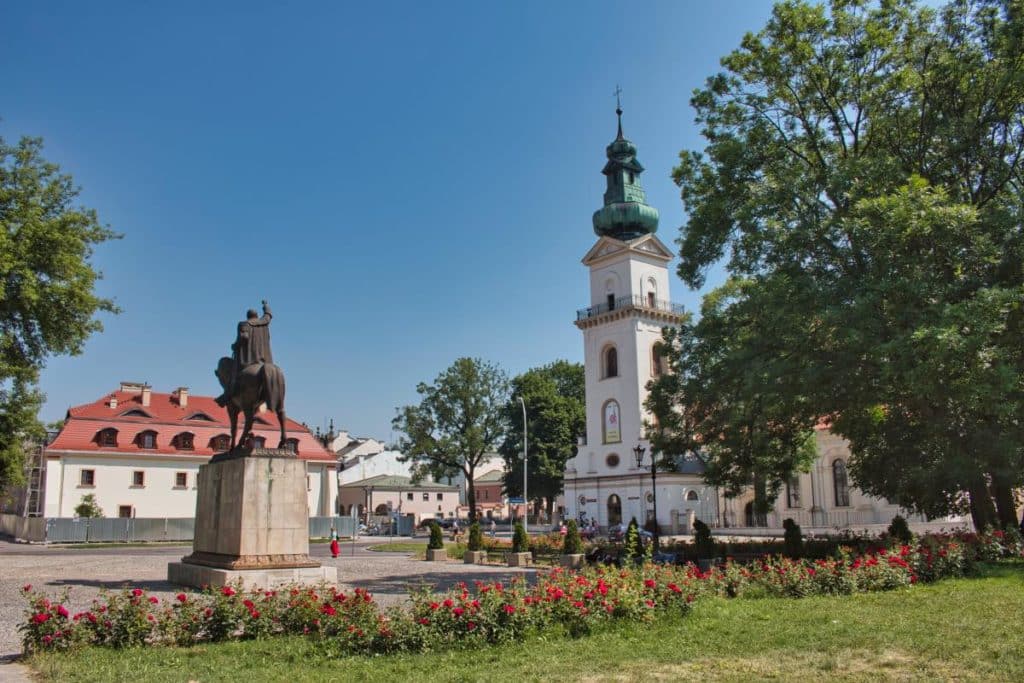
Monument of Jan Zamoyski
Of course, the founder of the city Jan Zamoyski is also commemorated in Zamość. A large equestrian statue depicts him east of the old town in front of his former palace. A photo in front of the monument should therefore be part of the mandatory program for a visit to Zamość.
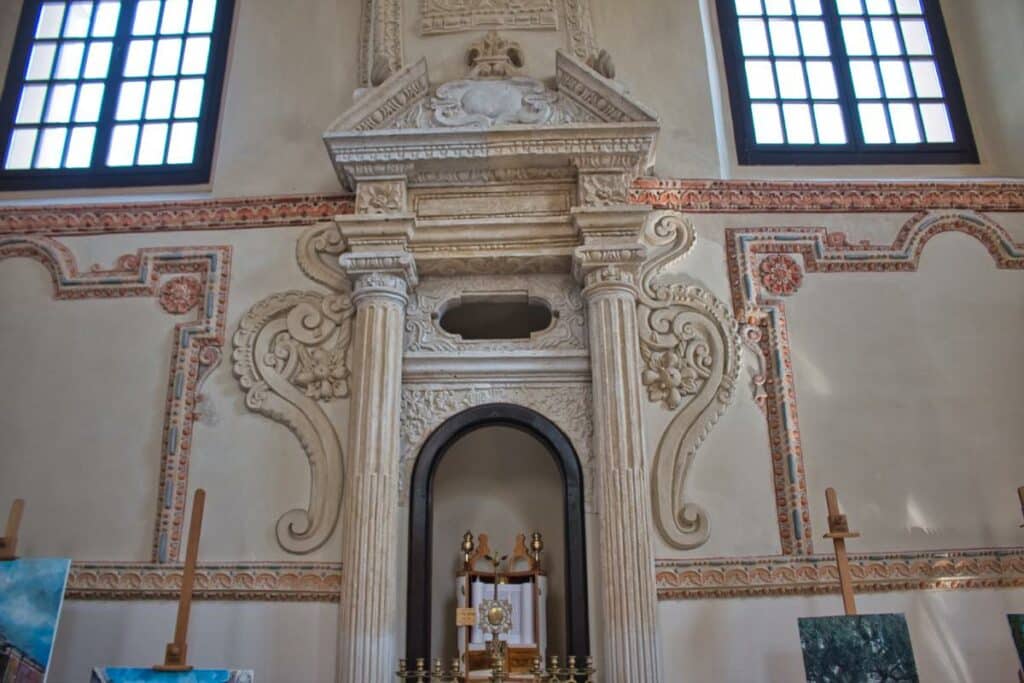
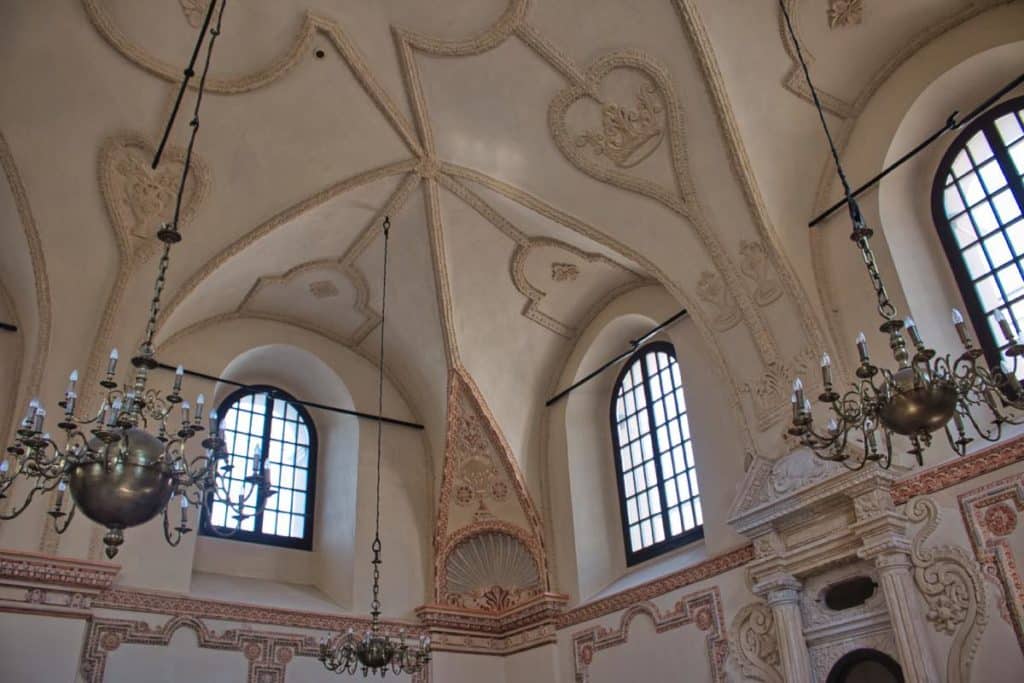
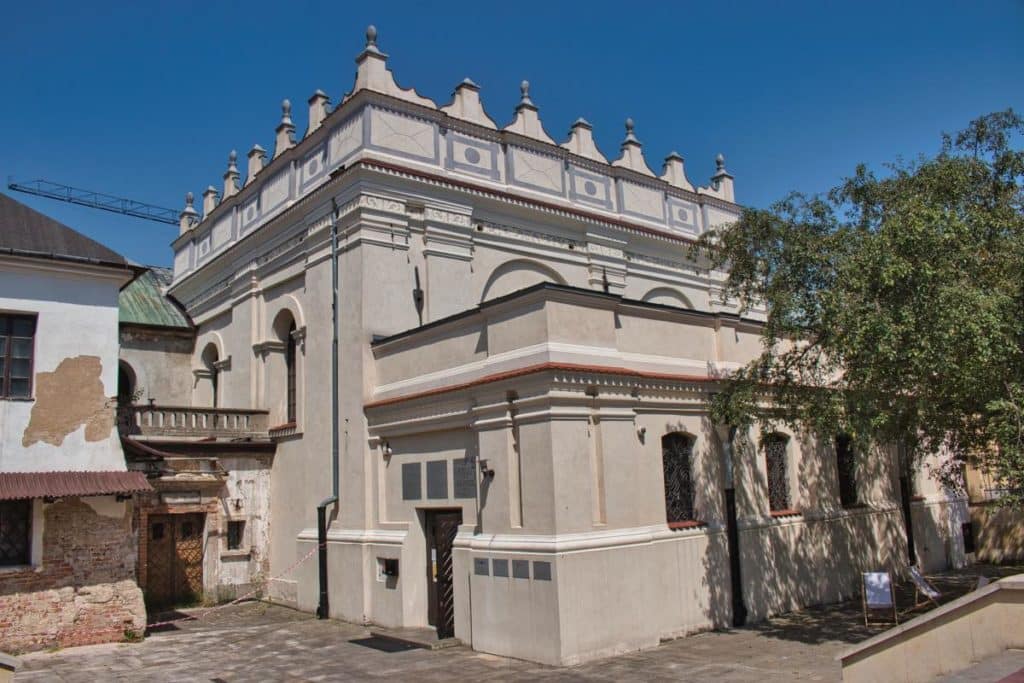
Jewish Zamość
At the beginning of the German occupation in 1939, almost half of the city (43%) was Jewish. That was 12,000 souls here alone at that time. They were locked up in the Zamość ghetto and later deported. After the systematic persecution and murder of Jews in eastern Poland, only a few dozen of the once large Jewish community remained in Zamość. Today, there are said to be only three Jews left in Zamość.
Zamość Synagogue – Most beautiful temple of the region
But at least the beautiful Renaissance synagogue of the city remains until today. Built from 1610 by 1618, it was the northernmost temple of Sephardic Jews in Poland. Its founders came from the Ottoman Empire and Italy, but were later assimilated by the numerically stronger Ashkenazi Jews of the region. The synagogue survived the war only because it had been converted into a carpenters workshop. Until 2004 the synagogue was used as a library and then it was one of the first in Poland to be handed back over to the Jewish community. Subsequently, it was renovated and now houses an art gallery and an exhibition about the history of Jews in Zamość and the Zamość Synagogue.
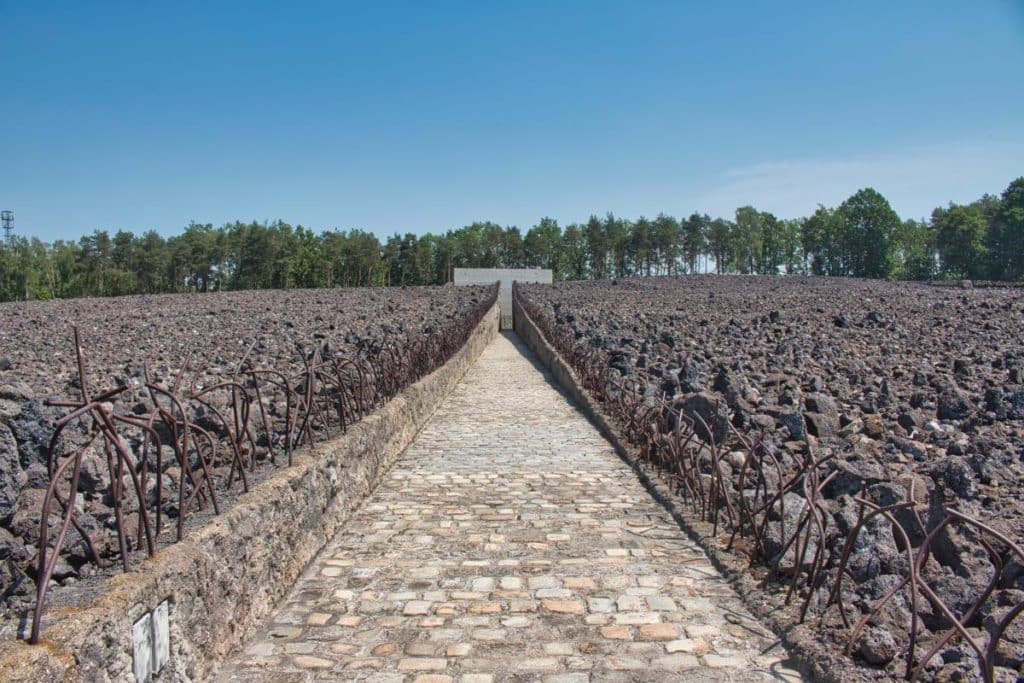
Belzec extermination camp – Memorial to the Murdered Jews of Eastern Poland
Less than an hour away from the beautiful old town of Zamość is one of the most horrible places in all of Poland near the village of Bełżec. In the former Belzec extermination camp, the Germans interned and gassed at least 430,000 people. They were brought to the camp on cattle trains from the towns in the region. Belzec was one of the camps of the so-called Aktion Reinhardt, which served the sole purpose of exterminating Jews. Thus, there are only three(!) people known to have survived the Belzec camp at all. In the memorial there is a comprehensive exhibition about the systematic murder of the Jews of the region. The memorial next to it is an impressive monument with the names of the places of origin of the Jews murdered here.
Other sights in Zamość and surroundings
Outside the old town there are also some sights that make a visit to Zamość even more interesting.
Center for Film Culture Stylowy
The Stylowy Film Culture Center was opened in 2010. It is one of the most modern cinemas in Poland and is striking for its architecture alone. Films are shown every day in the three cinemas.
Zamość Zoo
The zoo in Zamość is one of the best and most modern in Poland and can definitely compete with other facilities in Europe. 312 species can be seen here on an area of 13 hectares. In recent years, the zoo has been modernized and attracts thousands of visitors to the Zamość region every year.
Where to eat and drink in Zamość
For a city of roughly 60.000 people only, Zamość has quite a lively gastro scene. You can get great food, delicious coffee and make friends over some beers at the local pub.
Restaurants in Zamość
-
Figa z Makiem (Rynek Wielki 4) – nice restaurant with local and international food and outdoor seating directly on the Market Square
- Gościniec Kanclerz (ul. Partyzantów 6) – Fantastic local food with friendly service and good choices.
- Restauracja Muzealna Ormianskie Piwnice (ul. Ormianska 30) – Eat Armenian food in one of the Armenian houses on Rynek and make a small culinary trip to the Caucasus.
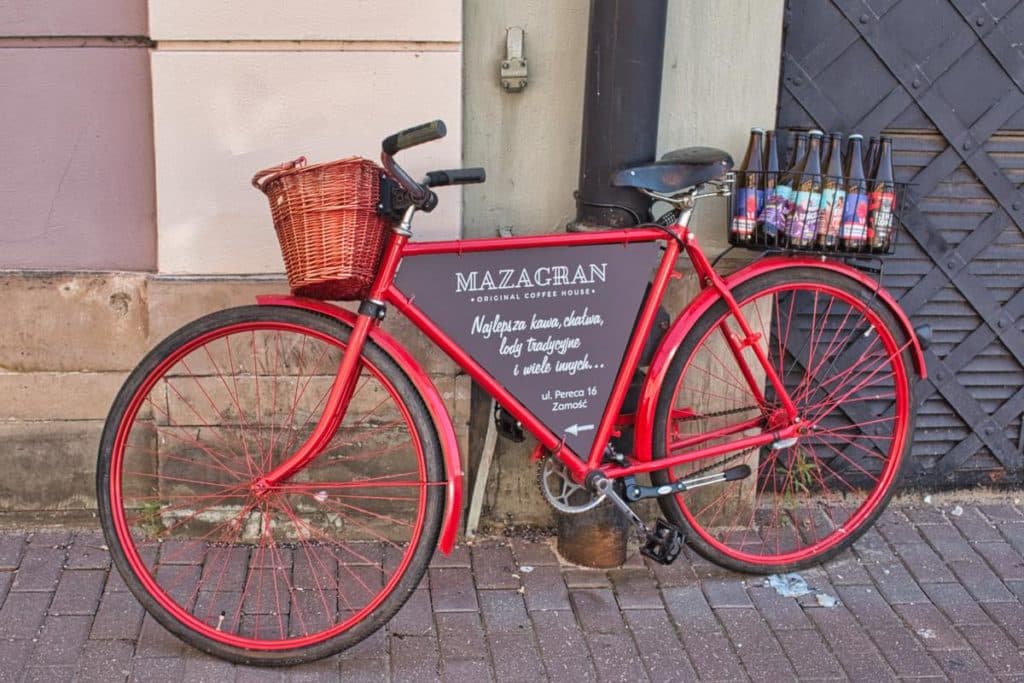
Cafés in Zamość
- Mazagran (Pereca 16) – Fantastic coffee and local cakes that you can grab right after visiting the synagogue.
-
Kawa Na Ławe (Rynek Wielki 8) – Play some board games while sipping coffee with a view on the Market Square.
Pubs in Zamość
- Seta i Galareta (ul. Grecka 9) – Who would have thought that communism still existed in Poland. Here it does. Come especially in the evening for a nice drink with the local crowd.
- Corner Pub (ul. Żeromskiego 6) – Nice place with friendly locals that serves even Murphy’s Stout. Good Polish pub food to go with the drinks.
Where to stay in Zamość
Hotels in Zamość
-
Hotel 77* (ul. Ludwika Zamenhofa 7) – Small, stylish hotel just 200 yards from the Market Square.
- Hotel Arte* (Rynek Wielki 9) – A hotel with an Italian name, directly at a Renaissance town square. Some rooms have a direct view at the town hall. Amazing!
Apartments and rooms in Zamość
Beautiful and cheap vacation rentals, apartments or private rooms are also available in Zamość at Airbnb*. If you sign up through my link, you get up to 50 euros off your first booking and I get a small bonus. With that I can co-finance our next blog trip. It costs you nothing extra.

